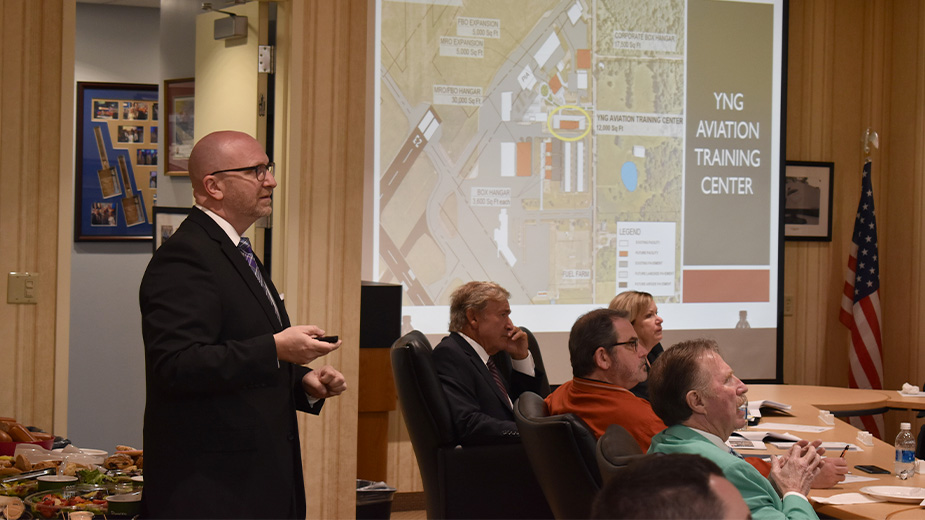Population Projections Worse Here than Peer Metros
YOUNGSTOWN, Ohio – The metropolitan area that includes the Mahoning Valley is projected to lose 8% of its population by 2030, the worst performance among a dozen peer metros, a newly released report shows.
“Indicators of Economic Competitiveness: Mahoning Valley Peer Group Report,” identifies metropolitan statistical areas comparable to the Youngstown-Warren-Boardman MSA based on characteristics including population, higher education enrollment and traded industries.
“Often, we compare ourselves to places like Cleveland and Akron but Youngstown is a smaller, mid-sized metro and thus Youngstown doesn’t have the competitive advantages of these larger areas,” said Sara Wenger, economic development program manager with the Eastgate Regional Council of Governments.
Eastgate and Youngstown State University’s Regional Economic Development Initiative prepared the report, which compares the Youngstown-Warren-Boardman MSA to 11 other metros including Canton; Flint, Mich.; Huntington, W.V.; Reading, Pa.; Scranton, Pa.; and Fort Wayne, Ind.
“Setting these metros as benchmarks, we now have a tool for better understanding why some metros are doing better economically than Youngstown,” Wenger said. Youngstown’s projected population loss has “huge implications for the competitiveness and sustainability of not only our communities’ fiscal health by the economy as a whole,” she said.
Peer metros were chosen based upon factors including population range of 300,000 to 800,000; not being a state capital; not being closer than 60 miles from a metropolitan area with a population of more than one million; being within 800 miles of Youngstown; and having fewer than 30,000 students enrolled in higher education.
The metros all have faced significant deindustrialization over the past 40 years and have had to diversify, and those with economies similar to that of Youngstown, with a few exceptions, have more population decline, Wenger said. Despite the economic shocks, some metros have managed to maintain population or even grow.
Of the 12 metros, Youngstown is among four projected to lose population. Chattanooga, Tenn., and Lancaster, Pa., by comparison, are projected to see population gains of 18% by 2030.
“Metros with declining populations also have low education attainment levels for bachelors and post graduate degrees,” she said. Indicators in which Youngstown ranked the lowest include knowledge creation, innovation capacity.
The factors that determine a population’s growth rate are birth and migration. With its aging population, the Mahoning Valley’s population has more deaths than births. Between 2010 and 2015, there were 29,566 birth and 36,271 deaths, a net loss of 6,705 individuals. During the same period, there was a net loss of 10,149 due to migration.
Between 2010 and 2014, the MSA saw its greatest net gains to the region were people from New York, Asia and Washington, D.C. Those leaving for other locations went in the largest numbers to Pittsburgh, Columbus and Phoenix.
The report can be used to identify the communities where the Mahoning Valley is losing human capital to, Wenger said. “It is important to understand why people from the Youngstown metro are choosing these locations in droves,” she said.
Among the report’s recommendations are that metros such as Youngstown shouldn’t compare itself to large metros. Strategies of improving downtowns, increasing transit access and and developing career pathways have seen successful in small and mid-sized cities.
Policies such as land use controls, tax structures and modernized infrastructure can help improve the business climate while limiting “the race to the bottom,” which promotes fragmentation of the metro area and intergovernmental competition that leads to greater population decline.
Copyright 2024 The Business Journal, Youngstown, Ohio.



